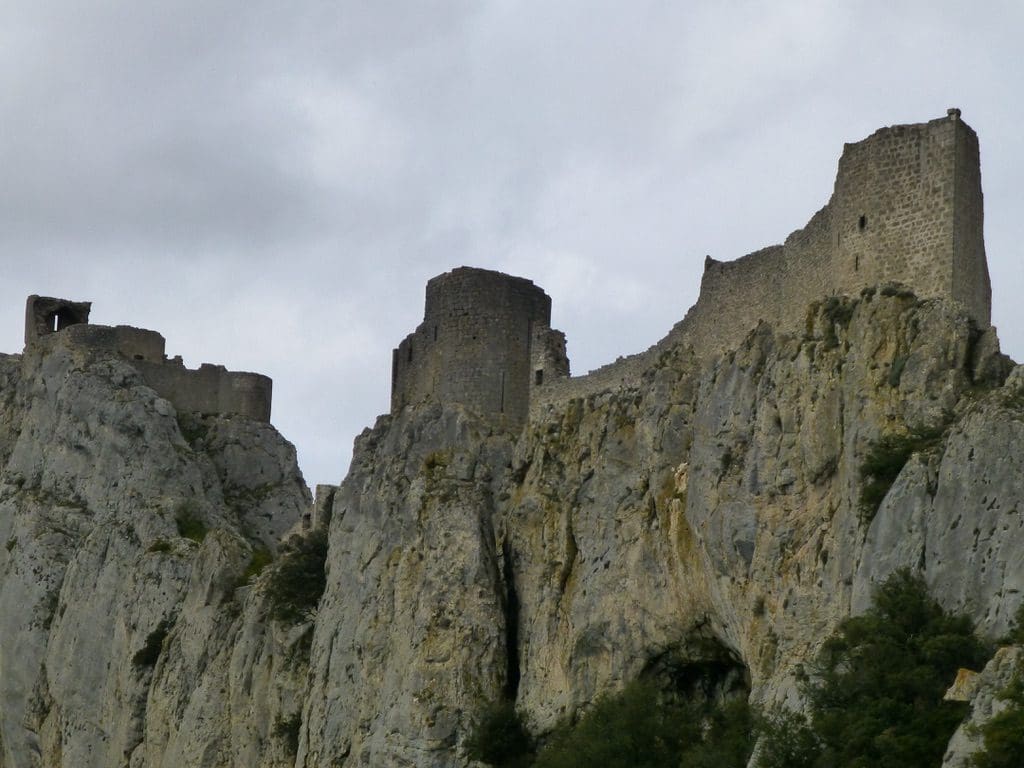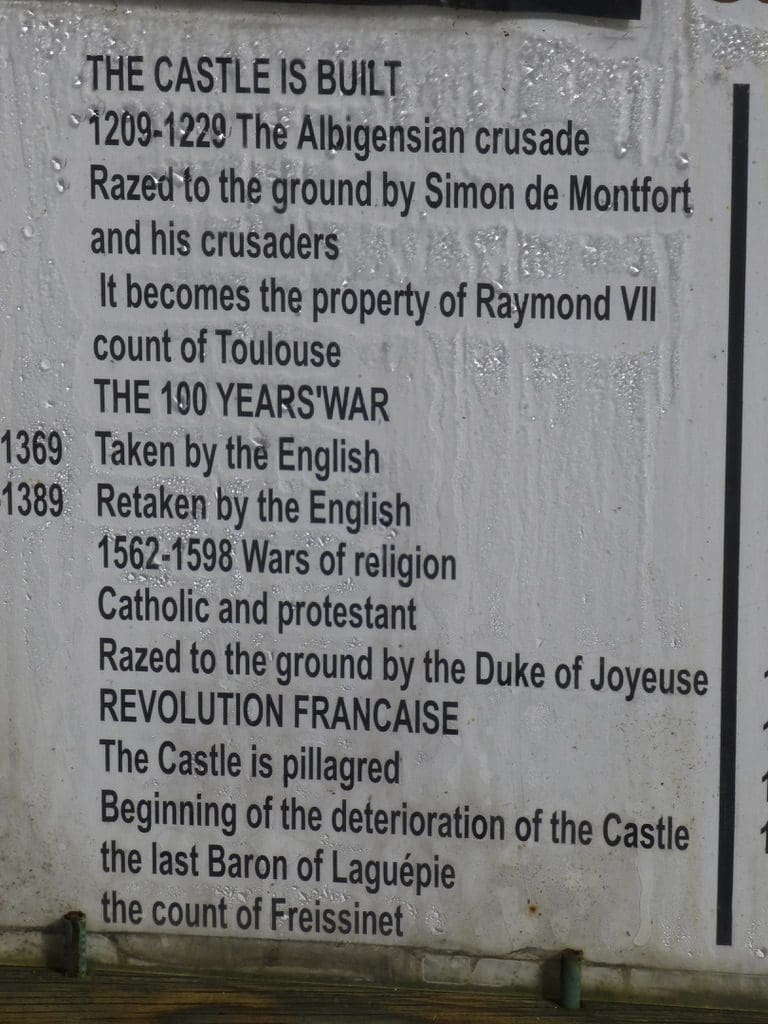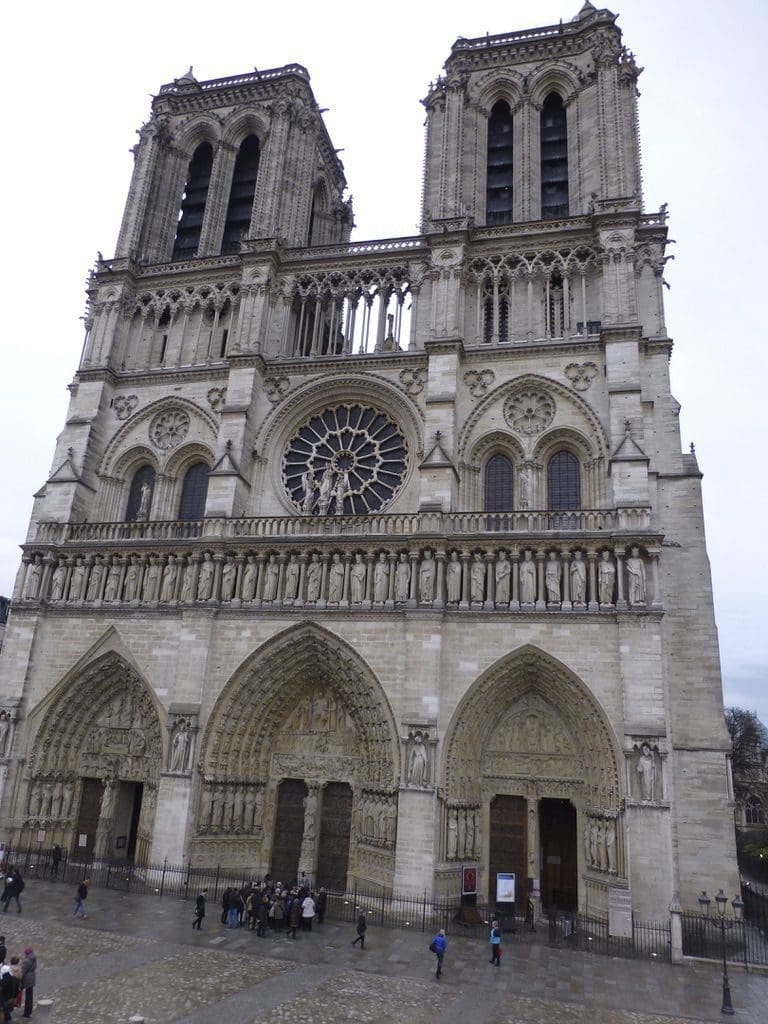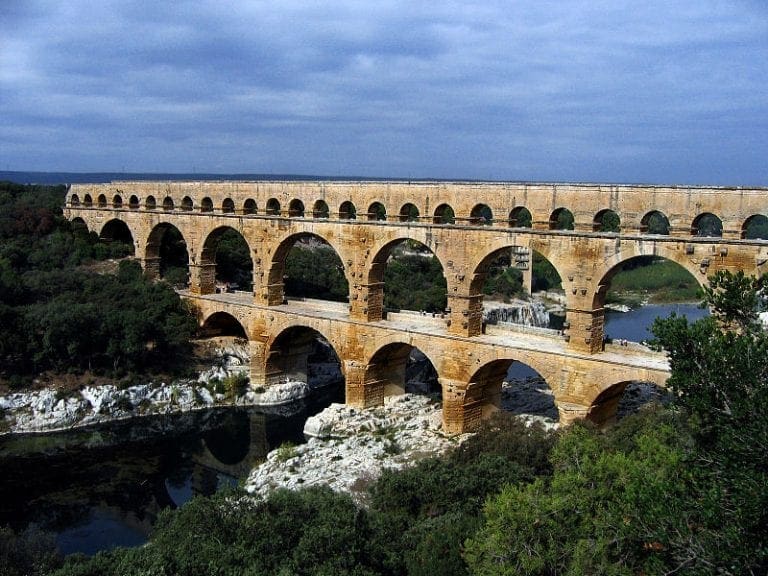France 2013 – week 8 – Limoux
23 Mar 2013. Saturday. Day 50. Drizzly day 16C. Change over day again. We drove to our new house at Limoux (just south of Carcassonne). A day of driving on motorways with a stop at Narbonne. Narbonne was a very important port – first for the Romans and then during the middle ages. It was extremely wealthy and set out to build the biggest cathedral in Europe. It was never finished. The river silted up and with it went the wealth to finish the cathedral. I had the impression that although Narbonne has a lot to offer tourists (especially with this fascinating story), it has not fully captured the idea that tourists can bring money.
I had the impression that it is still waiting for the river to un-silt itself so that life can get back to the much awaited good times. Reminded me of Cunnamulla waiting for the wool price to go back up. The river silted up 700 years ago. In 1982, Narbonne celebrated its 21 century since it was founded. Ie founded in 118BC. What would that be in -enials?
We had lunch in a sandwich/cafe with upstairs rooms on the end of the merchants bridge that spans the river and over looked the Roman Road Via Domitia. What had drawn me to Narbonne is the recently discovered Roman underground public grain store. We walked though it.
Onwards to Limoux. We are in a wooden house this time. Judging by the narrowness of the streets, we are in the old historic part of the city, but wooden houses have replaced the old stone buildings. Hooray. We are a little worn and so have not ventured out yet. Up until last weekend, Limoux was celebrating its annual carnival. We missed it by a week. But there was some big event happening just outside of town that had attracted hundreds of cars. Football?
24 Mar 2013. Sunday. Day 51. Overcast and a little drizzle. Day off. Helen has had a tooth ache for a few days. Hoping it will ease up today. We bought lunch from one of the four butchers around the main square (with a recommended bottle of wine €3.90) – lasagne. The main square at midday was filling up with locals greeting each other with big smiles – looks to be friendly and probably prosperous place. We read books for the afternoon.
25 Mar 2013. Monday. Day 52. Overcast and rain predicted. 13C. We went to Carcassonne. Carcassonne is a huge fortification built and occupied by many hands over many hundreds of years. The first major stronghold rock walled structure was roman. (This was a major – and rich – spot on the Via Domitia that ran from Spain to Rome.) Some Roman towers are still intact (no arrow slits) and Roman rocks often make up the bottom layers of later higher walls. After Romans, visigoths and vandals who did not do building.
Next round of building was during the ethnic cleansing of the Albigensian Crusade. Carcassonne surrounded, was incorporated into France and was now the major fortification on the border of France and Aragon. Many cycles of building – adding more bits – especially skirts to keep sappers away from the walls and put a few extra walls between the main walls and canon. After Aragon was eaten by Spain, that meant Carcassonne protected the border between France and Spain. It was a military garrison until 1659 when the border moved to it current location – more building and changing things around. Carcassonne was essentially then abandoned (and became the inevitable stone quarry) until an architect decided to rebuild it in 1853 (which saved it from ruin and destruction). Now a UNESCO site since 1997 that now draws millions of tourists each year. Just 200 people live in the old town (Le Cite). Parking for 2,000 cars outside.
It is difficult to think of Carcassonne as anything other than a large museum with a few restaurants in the middle. We were there on a quiet day in winter. Even so, the crowds were fairly biggish – with lineup to get to ‘the’ place to take ‘the’ photo. A lot of Italian and Spanish. Some great posing by the Italians who were obviously models (at least in their mind) ‘A legend in his own mind.’ Quote for the day: two Irish girls, one is to take yet another photo of her friend who said “do you want me to do ‘menacing'”? The answer was ‘Normal will do, that is menacing enough’, which broke up all the English speakers.
As we were leaving the castle thinking of lunch it began to snow – we are just a little way from the Pyrenees. We ducked into one of the many restaurants (La Cotte de Mailles) that fill La Cite and had the ‘Formula Cathar’. Very filling cassoulet. Possibly a bit too filling.
26 & 27 March. Tuesday and Wednesday. We stayed mainly indoors. I have to report that the butcher in the town square has excellent cooked meals as takeaways. We’ve bought three of them and all were very good.

28 March 2013. Thursday. Day 55. Cloudy and sunny 18C. We took the chance to visit two of the purported ‘Cathar’ castles. We went to Peyrepertuse and Queribus. Both are extremely impressive with outstanding views and well worth the walk up from the car park. They both have approximately the same history – strategic outposts along the border of France and Aragon (Spain) from say 1020 to 1659 when a new border was agreed.
These were clearly important strategic sites and were two of the ‘five sons of Carcassonne’ that defended the frontier. Over the last few years, the Department of Aude has decided that calling them ‘Cathar’ castles will draw the outraged tourists. Yes, the murder of thousands of people in the early XIII century by the Catholic Church was a disgusting chunk of history and it is difficult to see how the people involved in the killing could have been made ‘saints’. It is difficult for me to see Simon de Montfort as anything but a genocidal maniac.
Thousands were burned or hacked to death because they disagreed with the Catholic Church and it is hard to see why Pope Innocent III, Simon de Montfort and the ‘saints’ are not war criminals, however, these castles had little to do with any of it. (Hasn’t Innocent got an interesting name? As Sir Humphrey said ‘do the hard part in the heading’. Different times for different outcome. Now we send war criminals to The Hague. In the XIII century, they made them saints. Helen says ‘well they won, what would you expect’. Hmm, maybe not saints.) Don’t you really like Innocent?!! This bloke, when elected pope, gets to chose his name. Knowing he is about to kill off 200,000 people and thinking ‘how will history, or some higher court, judge me’? Innocent!! In Queribus, one of the Cathars was arrested after he had sought refuge there in 1241. Me thinks Aude Department is stretching a very long bow, But they are all interesting to see and worth the trouble. (At Queribus, the heading of the sign is ‘Cathar Castle’. The text says ‘er, we don’t think this castle had anything to do with Cathars, but one was arrested here’. Very droll.)
29 March 2013. Friday. Day 56. Sunny 23C. Startled to see a clear sky. Limoux had its market today. Mainly clothing with just a little food. I had not seen any cheese for sale in Limoux (which surprised me) until the one little stand with goat’s cheese today. We bought three meals from our friendly local butcher (today was cooked salmon pieces and three plates of seafood mornay) and drove up to the Canal du Midi just to the east of Carcassonne. Sat around in the sun. Drove south through Bram (site of a major Cathar atrocity) to Miripoux (interesting looking old town). Difficulty parking outside our house today. Too many cars. I sang through the whole touring repertoire today – 1 1/2 hours.
And that brings to an end our week in the Aude Department and our three weeks in the Languedoc-Roussillon Region. I have enjoyed Limoux. It is a prosperous village in a prosperous valley in a prosperous Department. The Cathars certainly had a tough tragic time. The little house is ok – 4 big sized rooms (we used 3) and bathroom. Quite a good supply of books to read (of which Helen has made good use). The bakery at 250m away is the furthest distance so far. The town itself is certainly extremely friendly and good humoured. The butcher shop on the square makes excellent meals. The local wine is good. The local specialty, Blanquette, is the predecessor of champagne, tastes as good and is less than 1/4 the price.



















